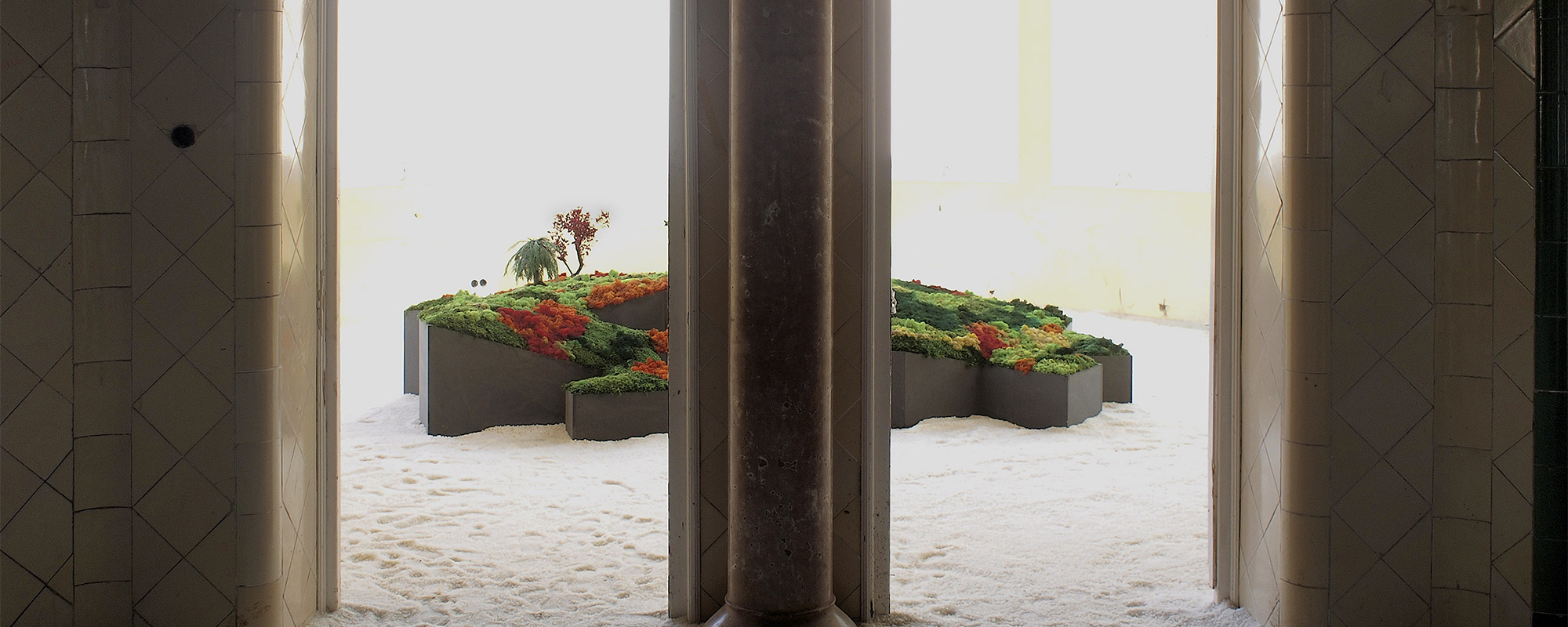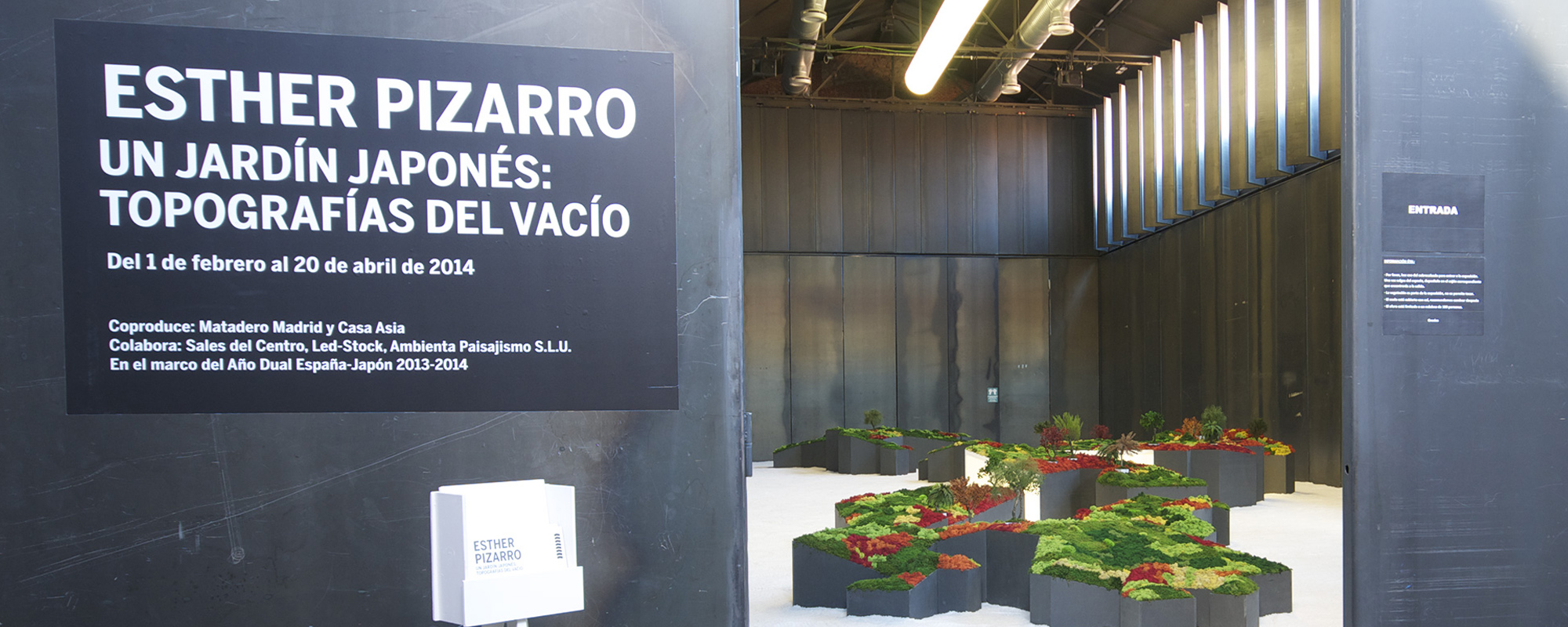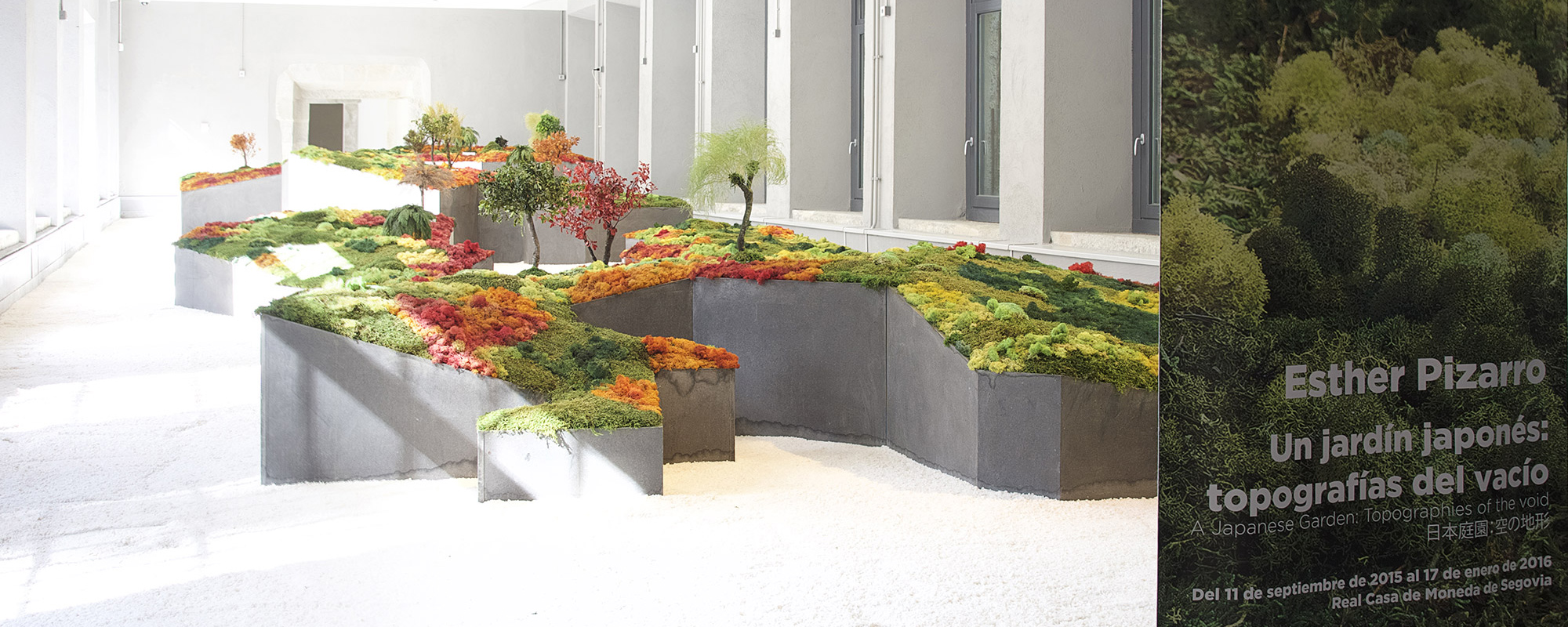
JAPANESE GARDEN :: TOPOGRAPHIES OF THE VOID © 2015 :: Real Casa de la Moneda Museum
“A Japanese Garden :: Topographies of the Void”.
Real Casa de la Moneda Museum, Segovia, Spain
Curated by: Menene Gras Balaguer
Project carried out in the framework of the Spain-Japan Dual Year 2013-2014
11/09/2015 to 17/01/2016
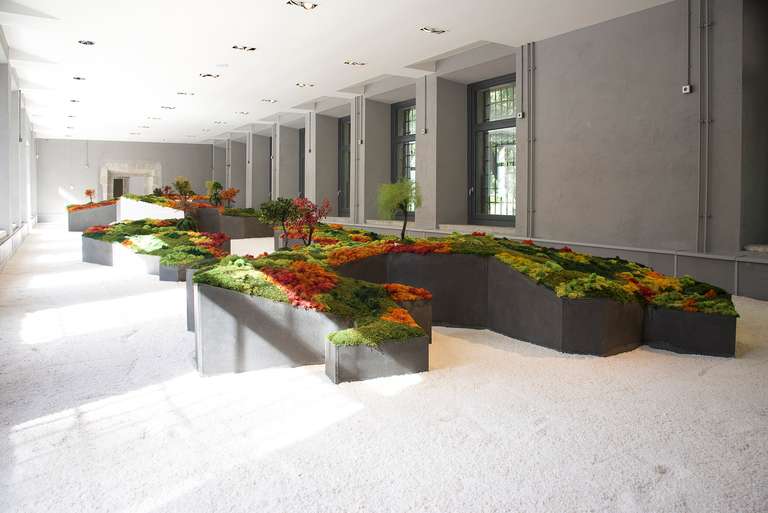
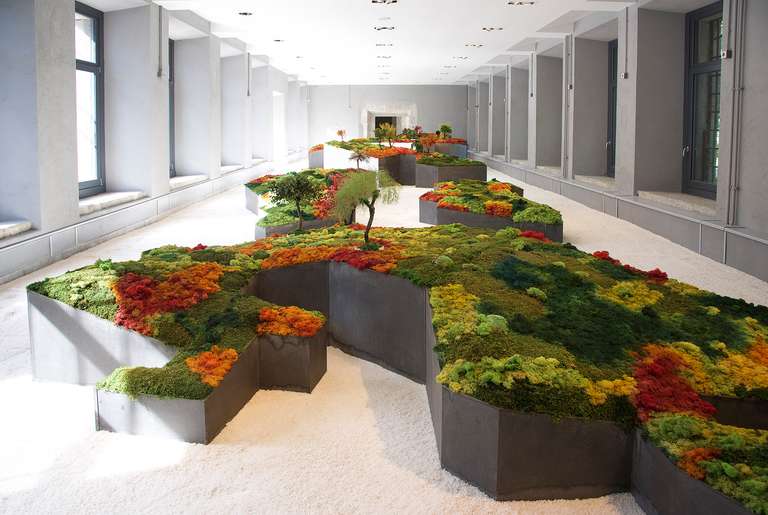
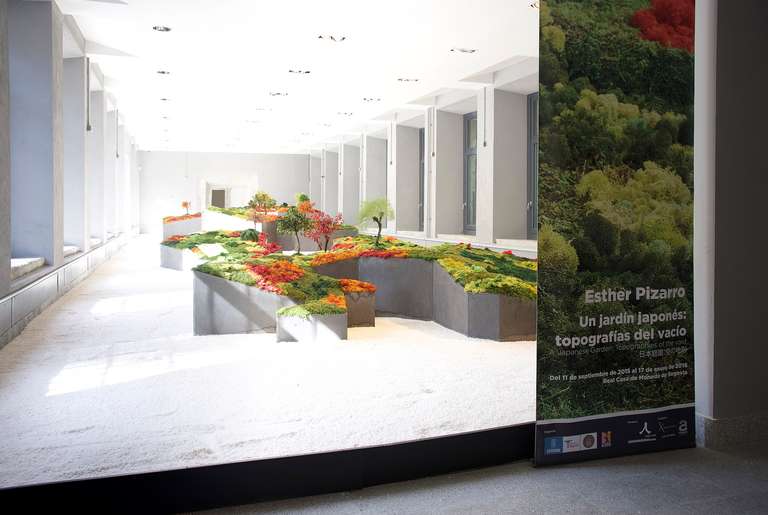
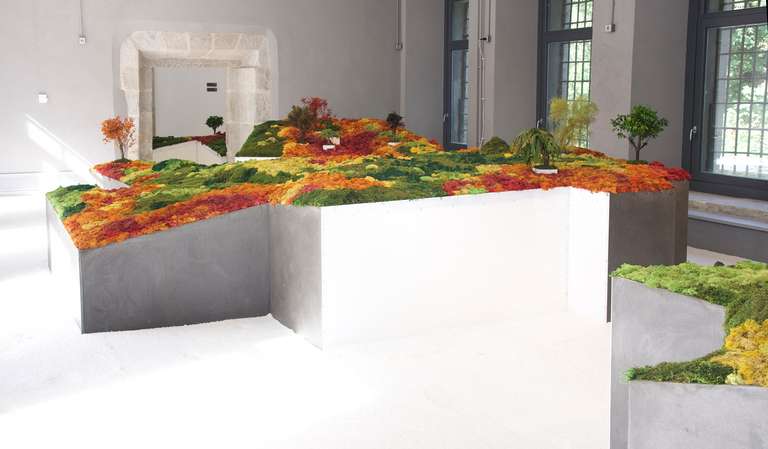
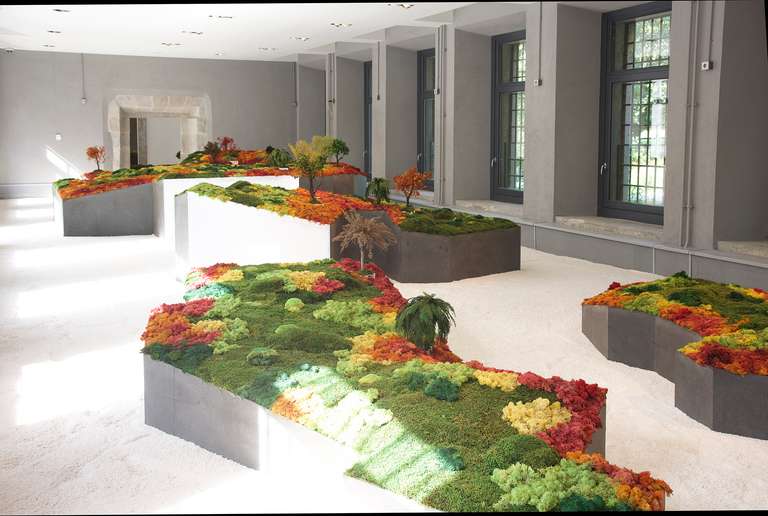
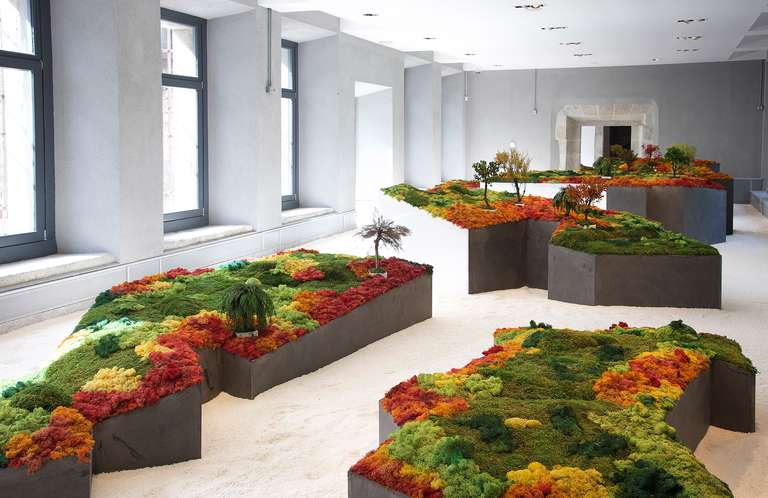
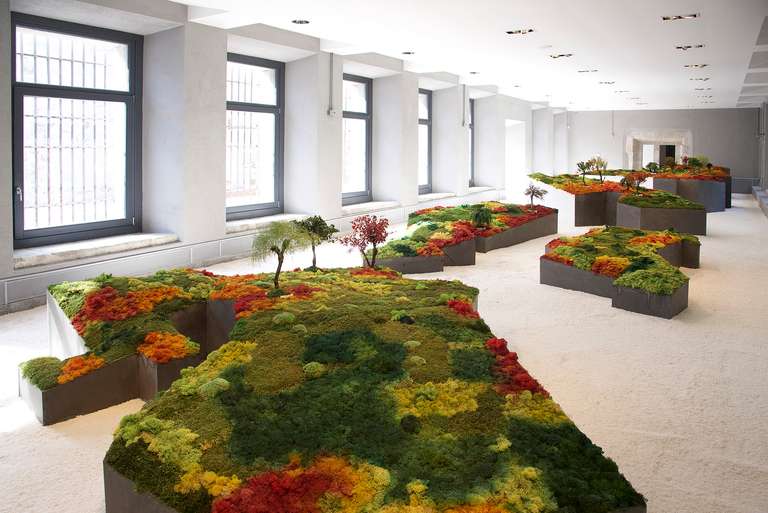
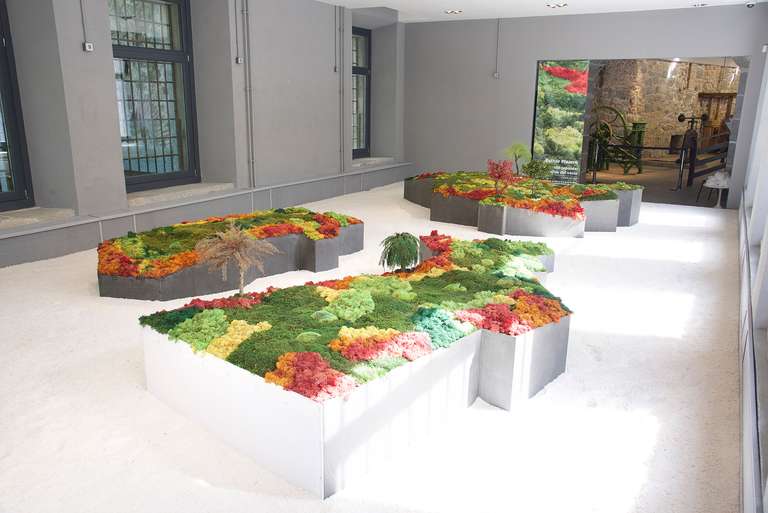
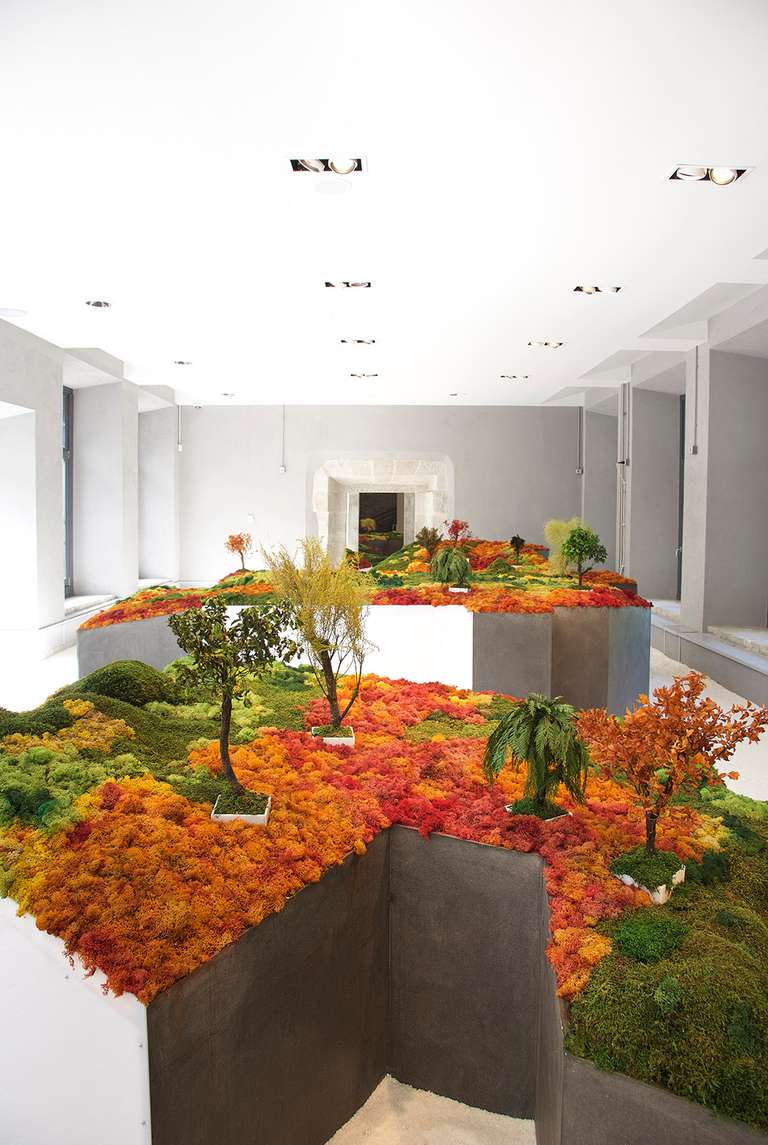
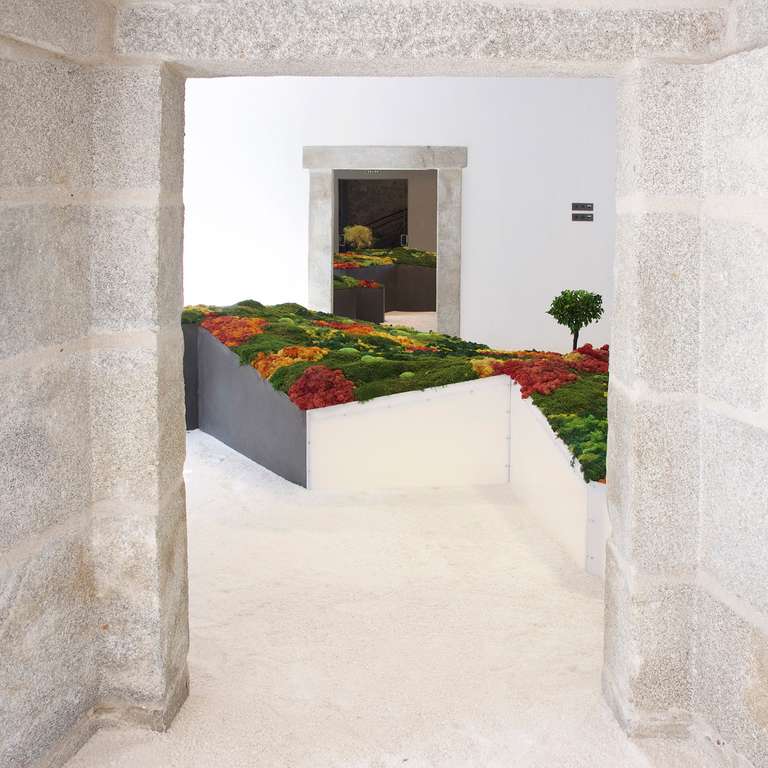
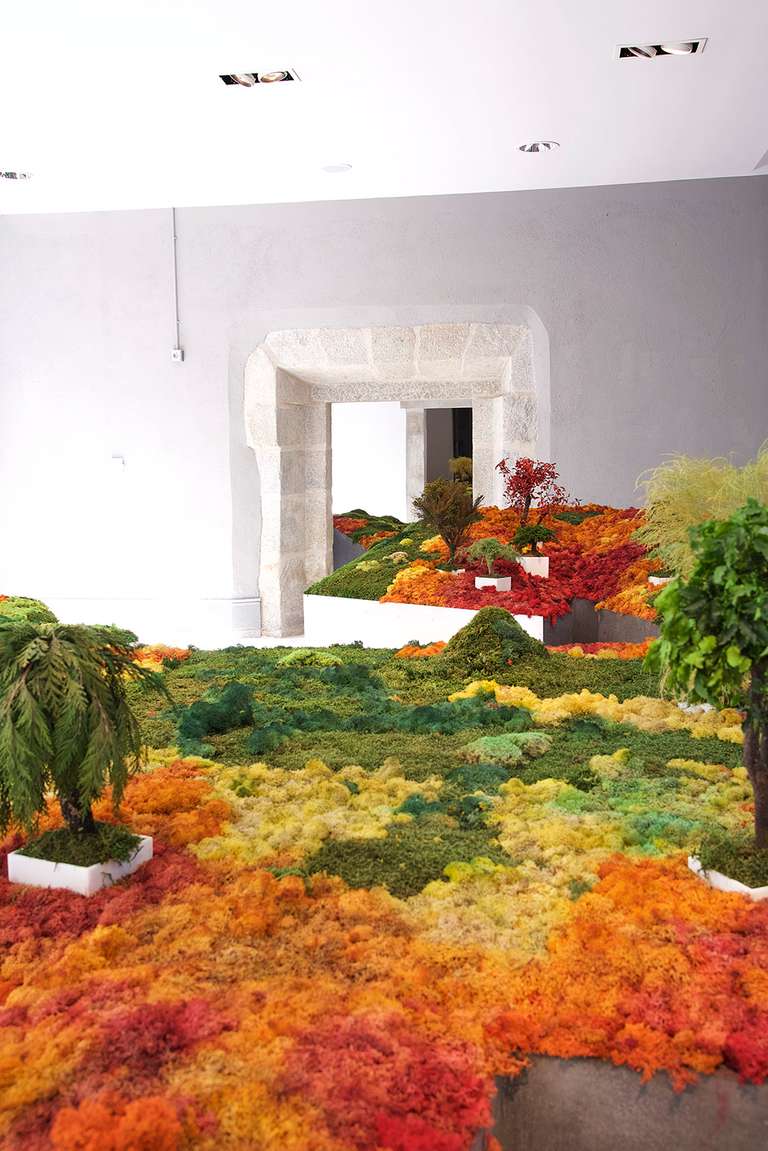
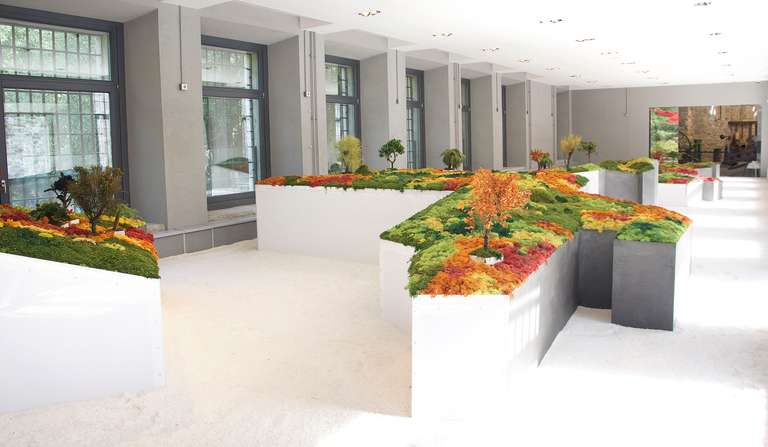
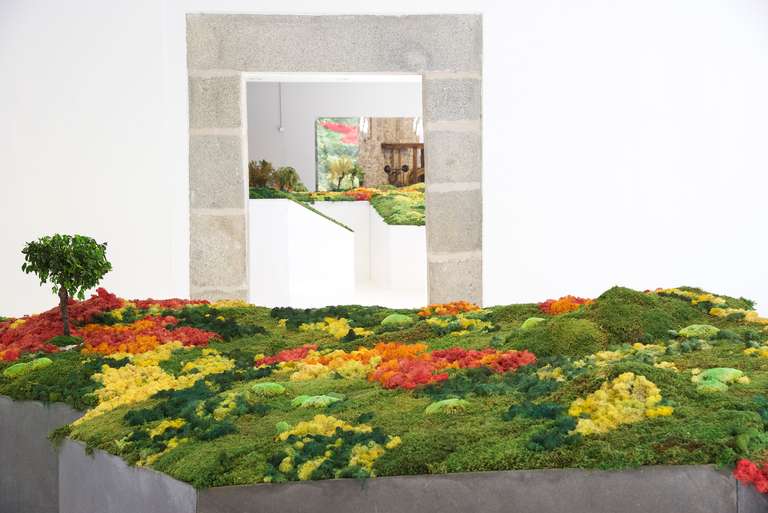
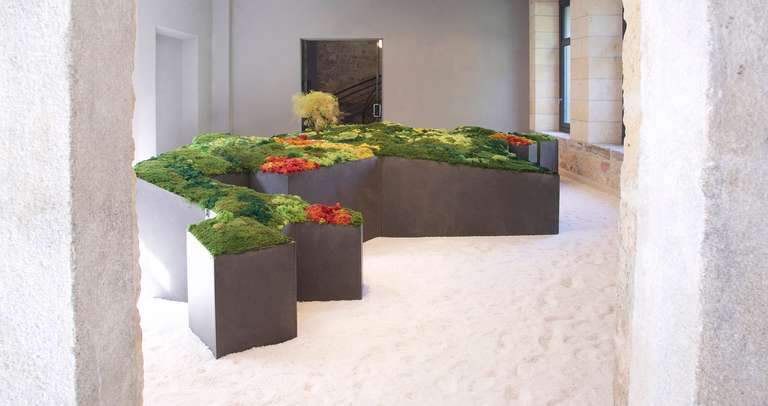
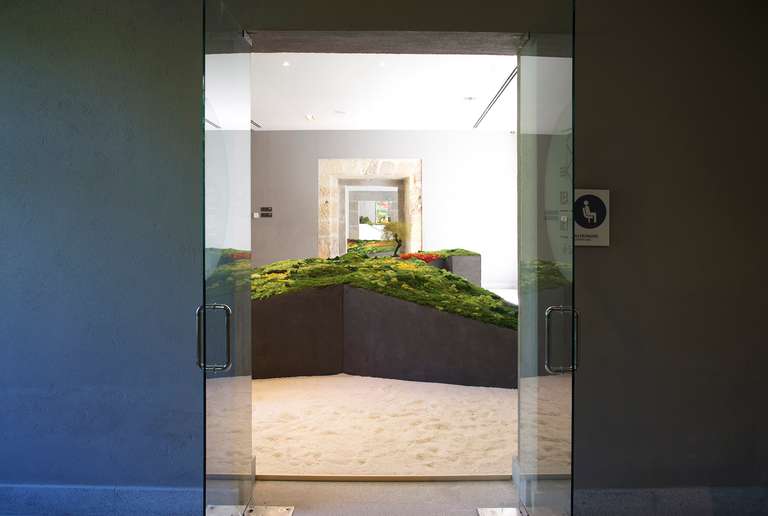
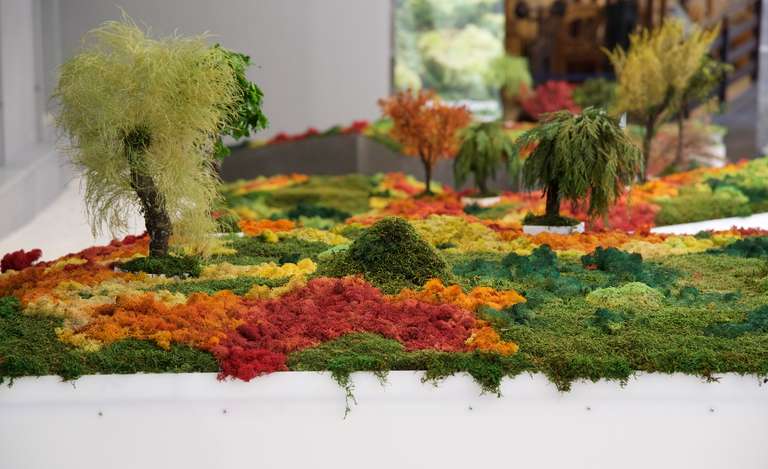
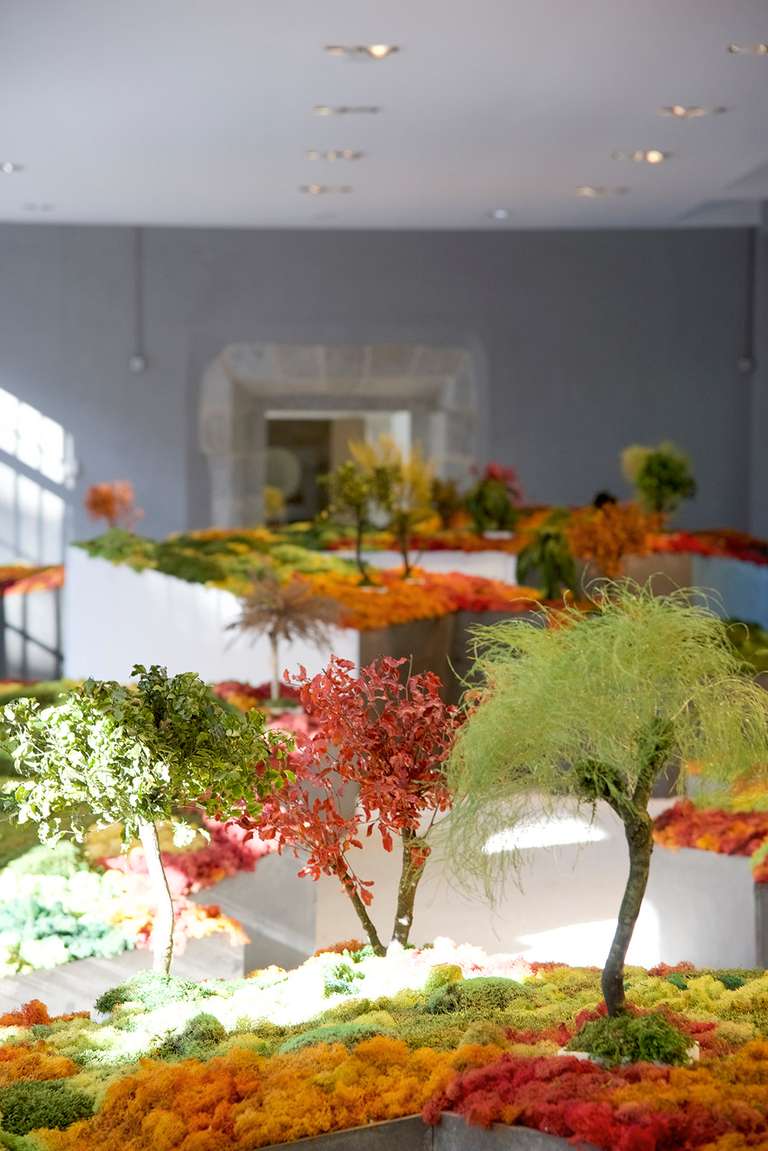
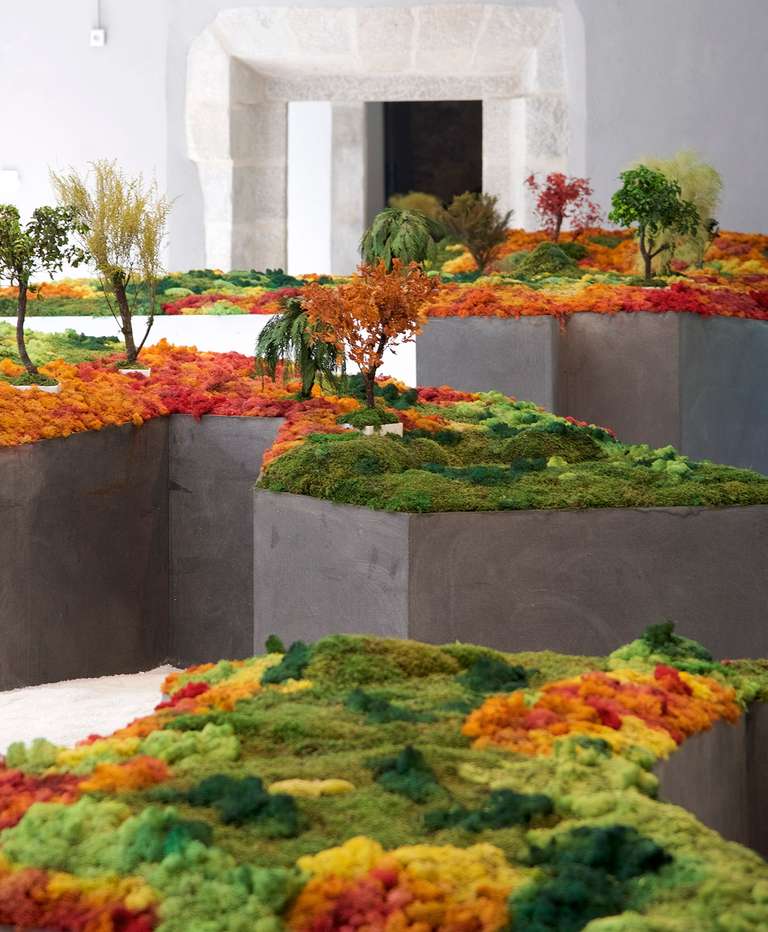
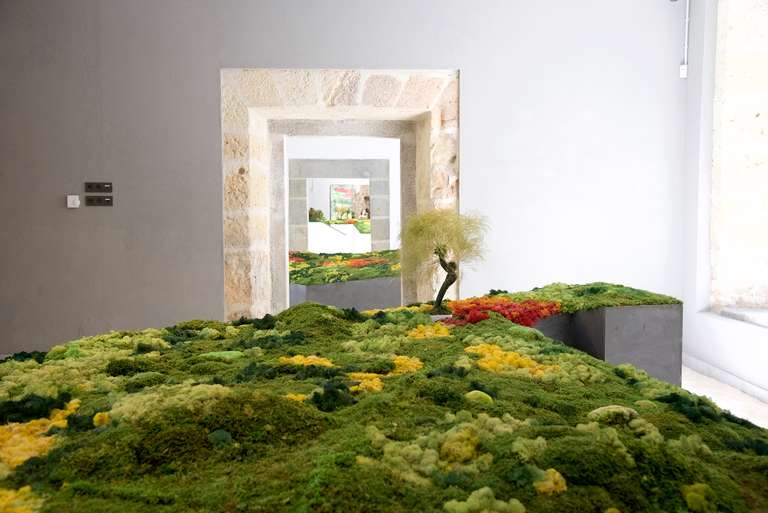
The Japanese garden is a representation of the world, a kind of microcosm in which there is an absence of scale. The different elements that make it up are related to each other in a symbolic order. Each line, each vegetation, each colour has its own meaning.
The project presented at the San Telmo Museum, entitled "A Japanese Garden: Topographies of the Void", confronts the principles of the Japanese garden with those of the world of cartography and the map.
This particular garden is built topographically on the outline of the map of the Japanese archipelago where, taking as its basis the political map that divides the country into eight regions, it generates eight sculptural containers with visual continuity between them. The vegetation layer, made up of preserved and freeze-dried mosses and plants, is articulated on the basis of the demographic chart of Japan's population density. The reds indicate the most populated areas, passing through a gradual degradation of oranges, yellows, light greens and dark greens for the less populated areas. Twenty bonsai are positioned within this vegetal cartography to indicate the most populated cities in the country.
Honshu, the central and largest island, encompasses five regions, criss-crossed by internally illuminated passages through which you can walk. These luminous attractors act as lanterns, like diffuse walls that remind us of the rice paper or shoji panels of the tea houses in Japanese gardens. The illumination follows the cycle of nature from day to night, until it reaches total darkness and starts again. In a five-minute cadence, the changes of light that occur throughout the day are captured. This representation in turn encapsulates the passage of time, which is so important in Japanese culture.
Multiple scales converge in the project: territorial, landscape, cartographic, human, urban and domestic. It is a garden that sharpens all the senses: sight (through its intense colour), touch (through the unique texture of its materials), smell (with the unique smell of the plants), taste (thanks to the immense sea of salt) and hearing (with the activation of sound recordings from the sea that evoke the importance of water).
"A Japanese Garden: Topographies of Emptiness" perceptually reacts to all the senses of the spectator, questioning the meaning of its volumetry and arrangement of plants, while at the same time creating a space for contemplation and meditation.
Esther Pizarro
CREDITS::
Conceptualisation: Esther Pizarro
Production: Esther Pizarro Studio
Technology: Markus Schroll
Organised by: Casa Asia, Matadero Madrid, Museo Real Casa de la Moneda
Curated by: Menene Gras Balaguer
Montage: Esther Pizarro Studio, Markus Schroll
Project carried out within the framework of the Spain-Japan Dual Year 2013-14 with the support of Matadero Madrid and Casa Asia.
ASSOCIATED CATALOGUE::
Pizarro, Esther (2014). Catálogo exposición: Un Jardín Japonés: topografías del vacío. Textos: Inmaculada López, Carlota Álvarez Basso, Menene Gras Balaguer y Esther Pizarro. Extensión: 128 páginas. Edita: Universidad de Granada, Centro de Cultura Contemporánea. ISBN: 978-84-338-5723-1, DL: GR / 2528-2014
Additional information about the project A Japanese Garden :: Topographies of the Void

